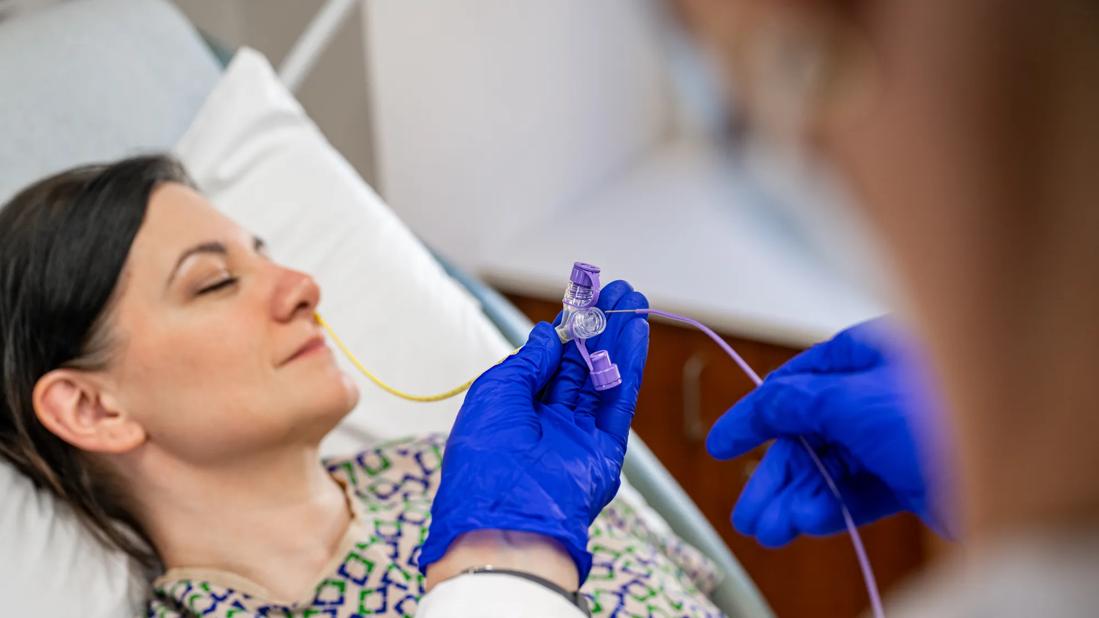Novel program helps clinicians troubleshoot common problems before they become "emergencies"

Patients are sent to the emergency department (ED) for a variety of medical and surgical reasons; however, some healthcare services may be more efficiently coordinated through outpatient resources. Helping patients — especially older individuals with comorbidities — avoid the ED and hospital readmission is important from both health and financial standpoints.
Advertisement
Cleveland Clinic is a non-profit academic medical center. Advertising on our site helps support our mission. We do not endorse non-Cleveland Clinic products or services. Policy
When a Cleveland Clinic nurse observed an influx of patients being sent to the ED unnecessarily, she questioned whether or not there were other — and better — options available. This led to the development of a toolkit to help caregivers troubleshoot common problems and avoid referral to the ED.
With an emphasis on post-acute providers, the Cleveland Clinic team has initiated a novel program to educate caregivers on how to provide appropriate care while avoiding unnecessary ED use and potential hospital readmissions.
Since March 2021, the program has featured quarterly educational sessions, which are open to anyone who wants to participate. The primary targets for this initiative are caregivers at skilled facilities and home healthcare agencies, notes Maria Kieliszek, MA, Program Manager of Care Management Operations at Cleveland Clinic’s Zielony Institute for Nursing Excellence.
“The majority of patients in these facilities are older and often suffer from multiple comorbidities; as a result, they are much more susceptible to illnesses brought on by repeat hospitalizations,” she says, while also highlighting the significant financial implications of frequent ED visits and readmissions.
“Although there are important reasons to send a patient to the ED, it is best for vulnerable patients to avoid emergency care whenever possible to decrease the risk of hospital readmission,” Kieliszek continues. “Hospitalization can become a vicious cycle, and our goal is to help break that cycle as often as we can.”
Advertisement
This program’s toolkit maps each hospital’s resources and ED capabilities and educates providers on common reasons patients seek emergency care, including dislodged Foley catheters and feeding tubes, clogged PICC lines, imaging, and non-emergent blood transfusions. The toolkit builds off of previous work by emergency physician Jason Milk, DO.
“Our primary focus is patients who are sent to the ED for imaging, blood transfusions or the placement or replacement of a device,” explains Nicole Berman, MSN, RN, CCM, Senior Director of Care Management at Cleveland Clinic West Region Hospitals. Because such resources are often unavailable after hours, it’s up to the clinician to determine when a patient requires emergent care and when the visit can wait. “The resources we provide can help caregivers make those judgment calls confidently,” she says.
During the educational sessions, Berman troubleshoots common scenarios to help prepare providers to address problems when they arise. For instance, nephrostomy tubes are typically replaced by interventional radiologists, but the procedure can seldom be performed after 4 p.m. Unless the patient is in pain, Berman notes that the procedure can often wait until the next day or be scheduled at an outpatient clinic. She also recommends speaking with the covering provider to decide if replacement is required.
Berman says the education program has continued to receive positive feedback. In one case, a care team was able to successfully address a PEG feeding tube issue without sending the patient to the ED. “They found the resources we provided to be valuable and were thrilled to help their patient avoid the ED,” she recalls.
Advertisement
Kieliszek and Berman hope to expand the program by offering solutions to other common problems, including nutritional deficiencies, and providing education to other clinicians and facilities that manage patients who have been discharged.
“We really seek to achieve that Quadruple Aim. We want both patients and caregivers to be satisfied with the care delivered while retaining optimal outcomes with minimal financial burden,” notes Berman. “It’s really about ensuring that patients receive the right care at the right place at the right time – and at the lowest cost.”
The development and evolution of this program also highlights the importance of elevating the voices of bedside caregivers, notes Berman. “This all started with a bedside nurse in the ED asking the question, ‘Is there something we can do?’ By escalating her observations, we were able to not only identify an issue but also find a solution.”
Advertisement
Advertisement

Neurology nursing calls for skill, emotional intensity and more

Nurses play a vital role in helping patients manage the chronic disease in inpatient and outpatient settings

A multitude of subspecialities offer versatility, variety

Transport nurses prepare to manage all patients and acuity levels

Delivering specialized care and education that improves outcomes

As robotics in the OR grows, so does the role of nurses

The fast-paced, high-tech field requires critical thinking and interpersonal skills to provide patient-centered care

Developing the perioperative caregivers of the future